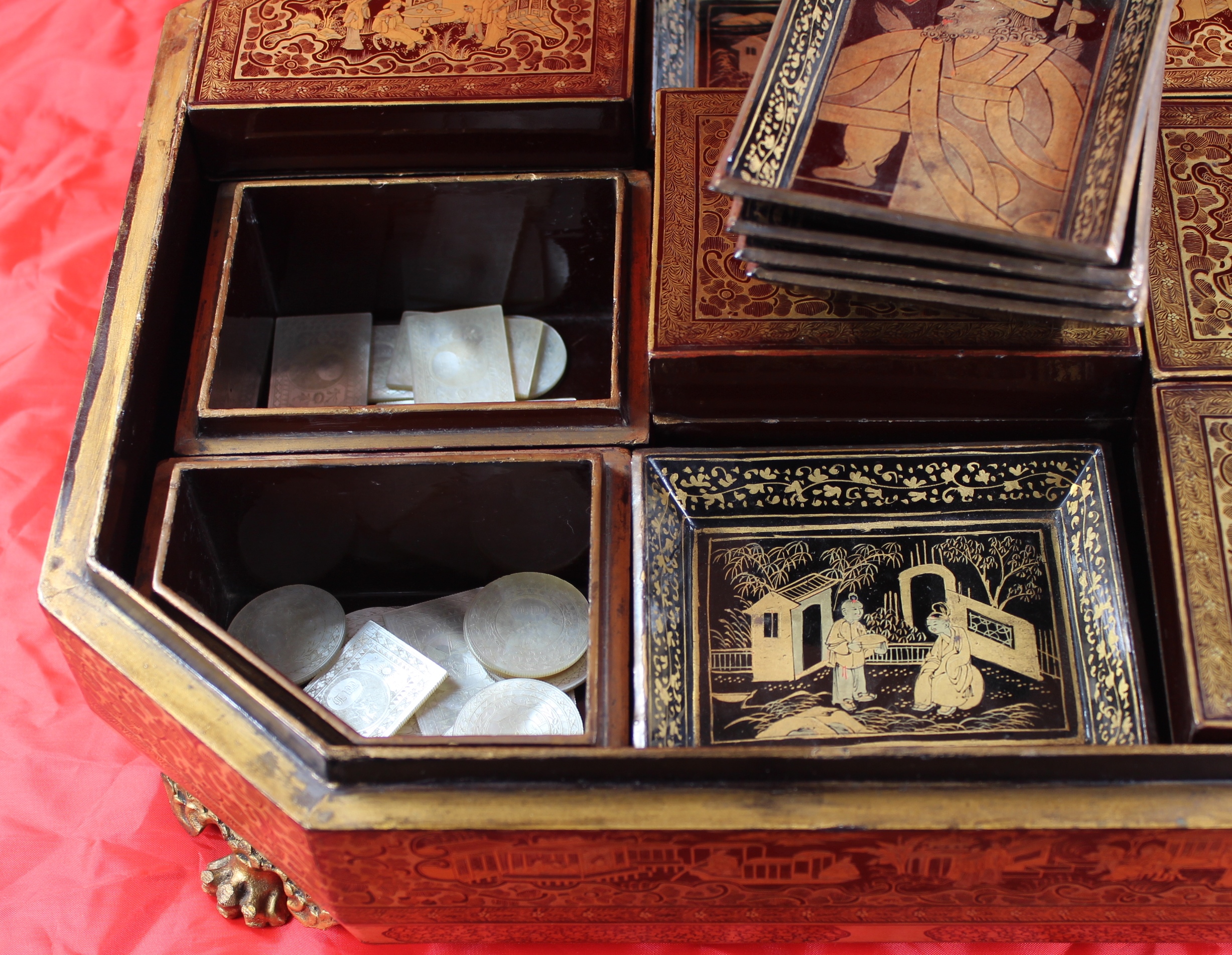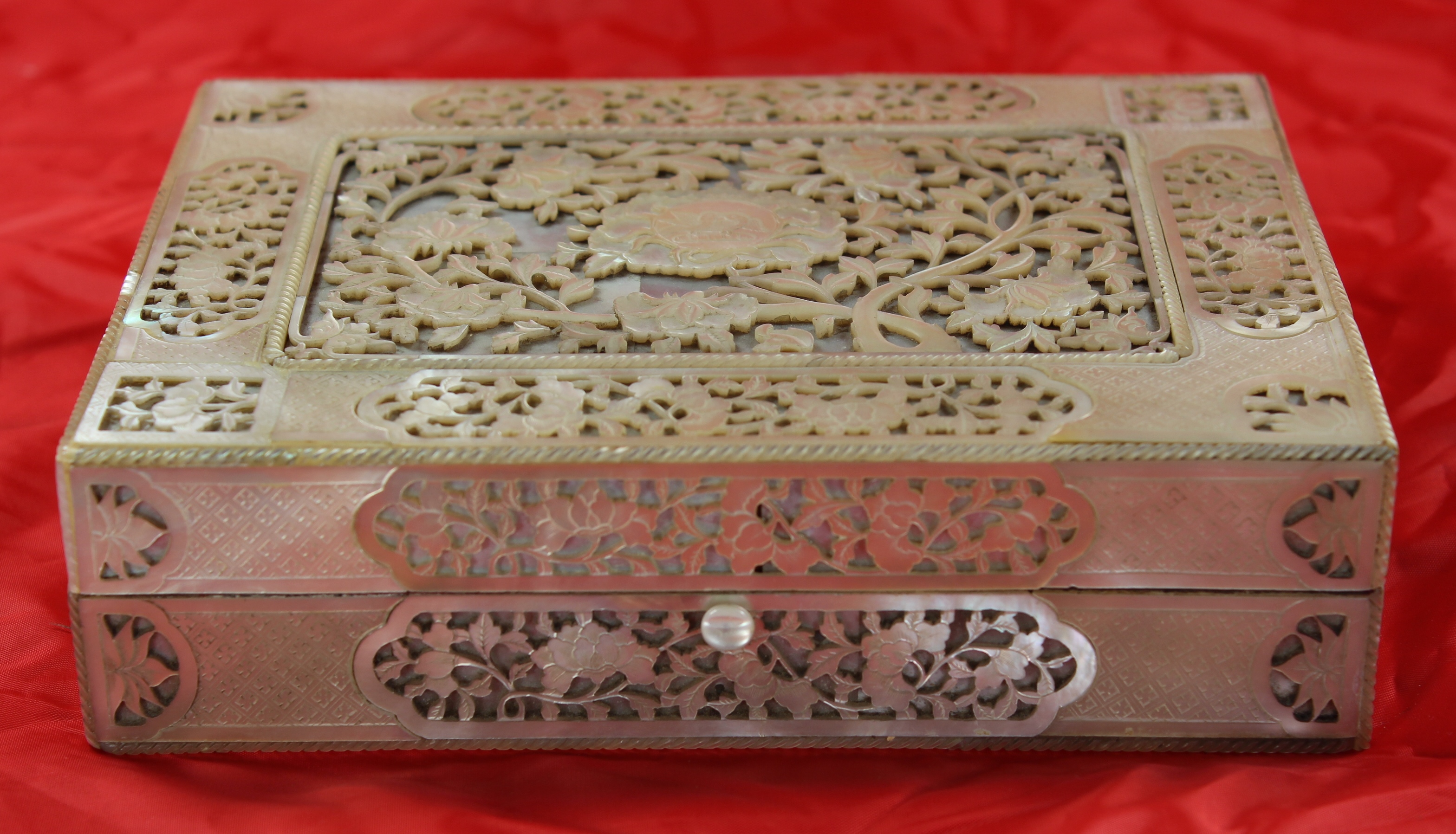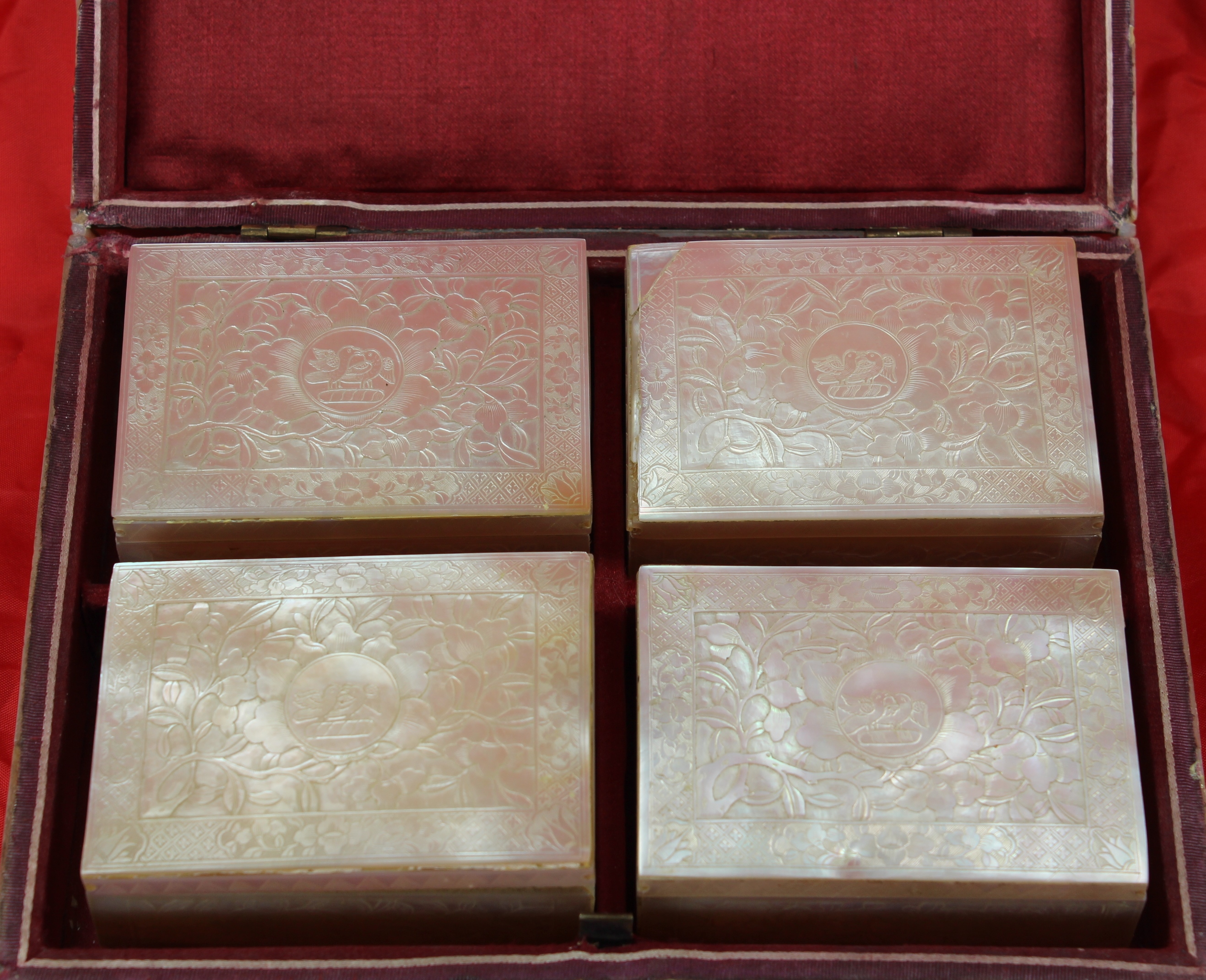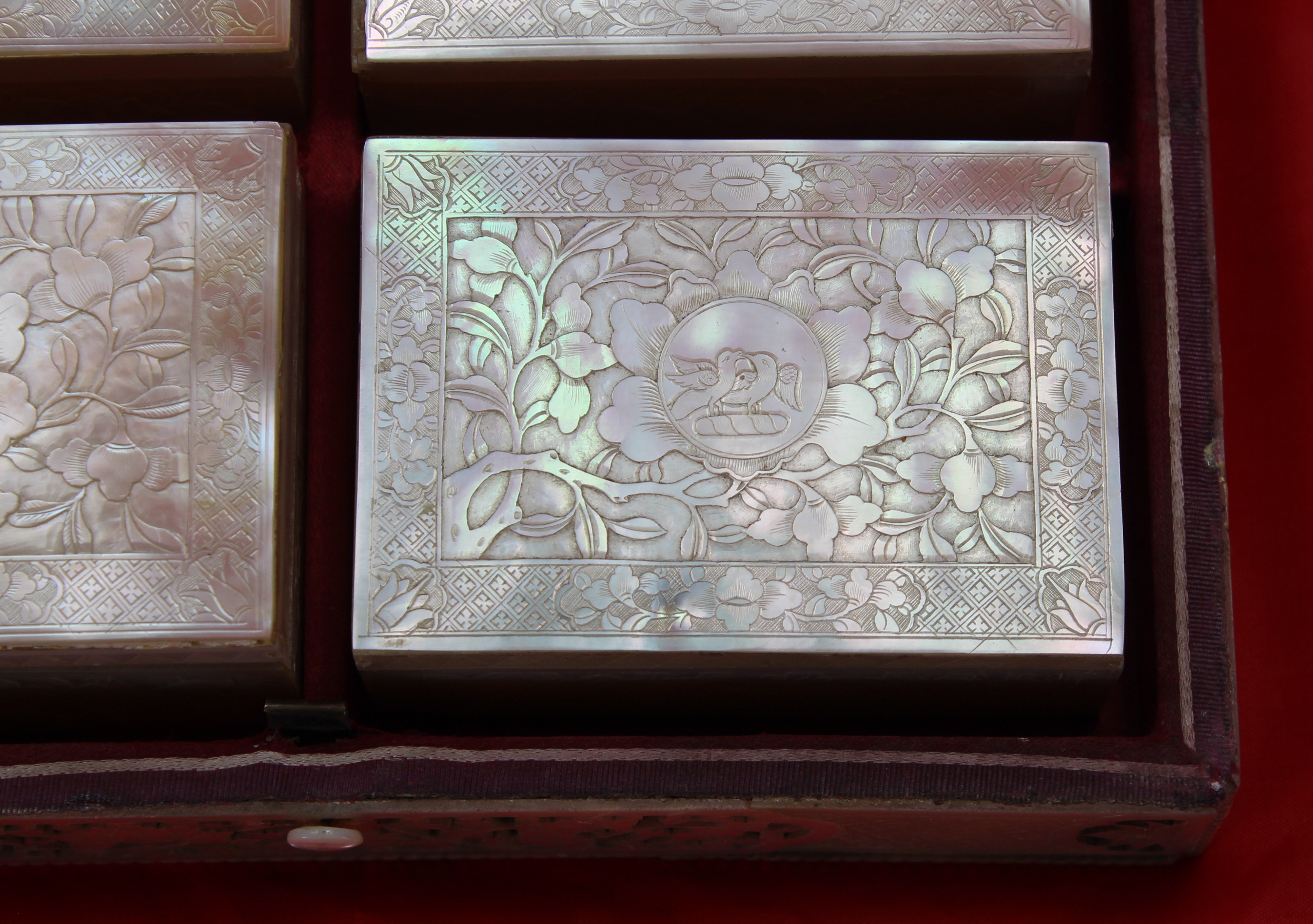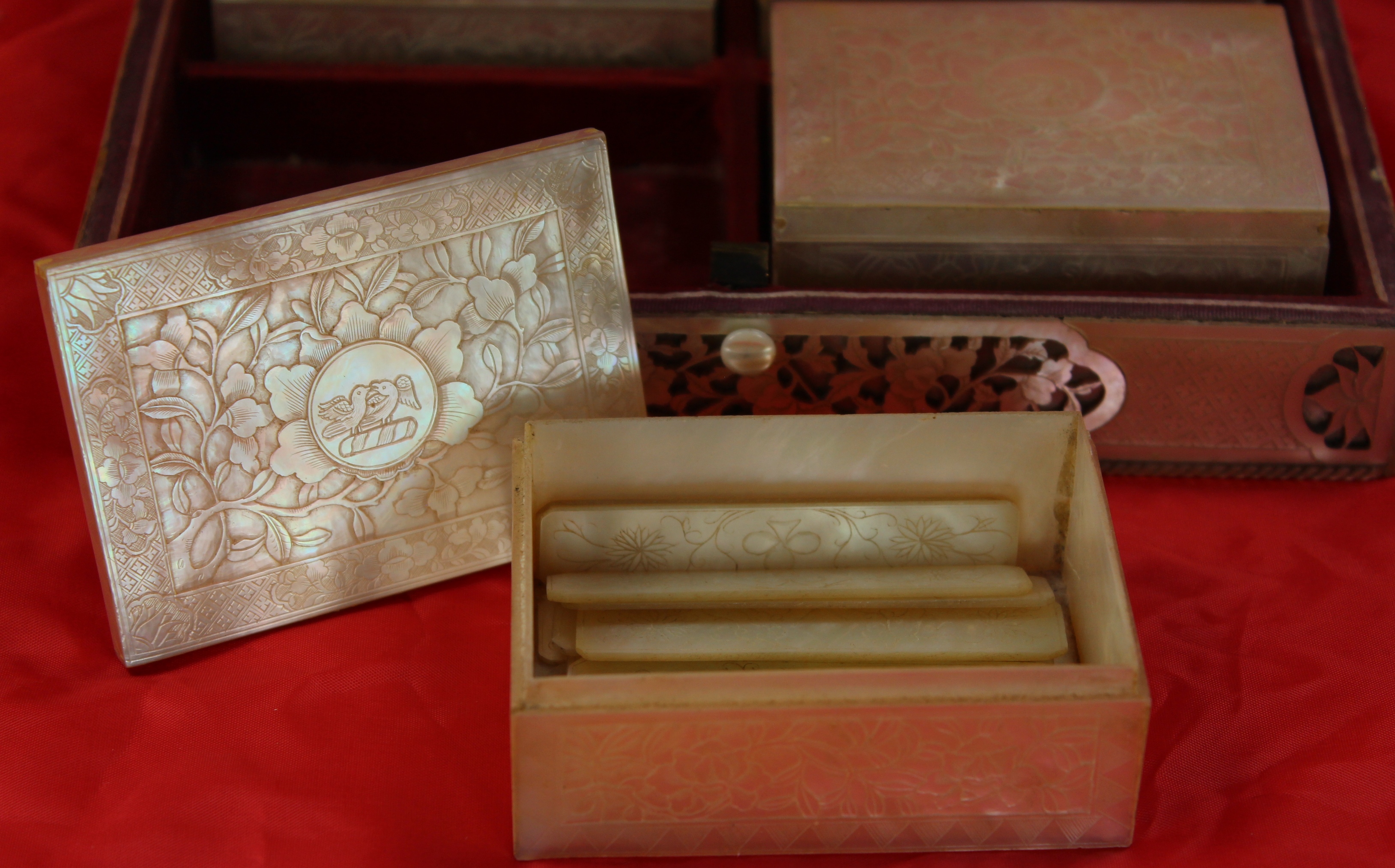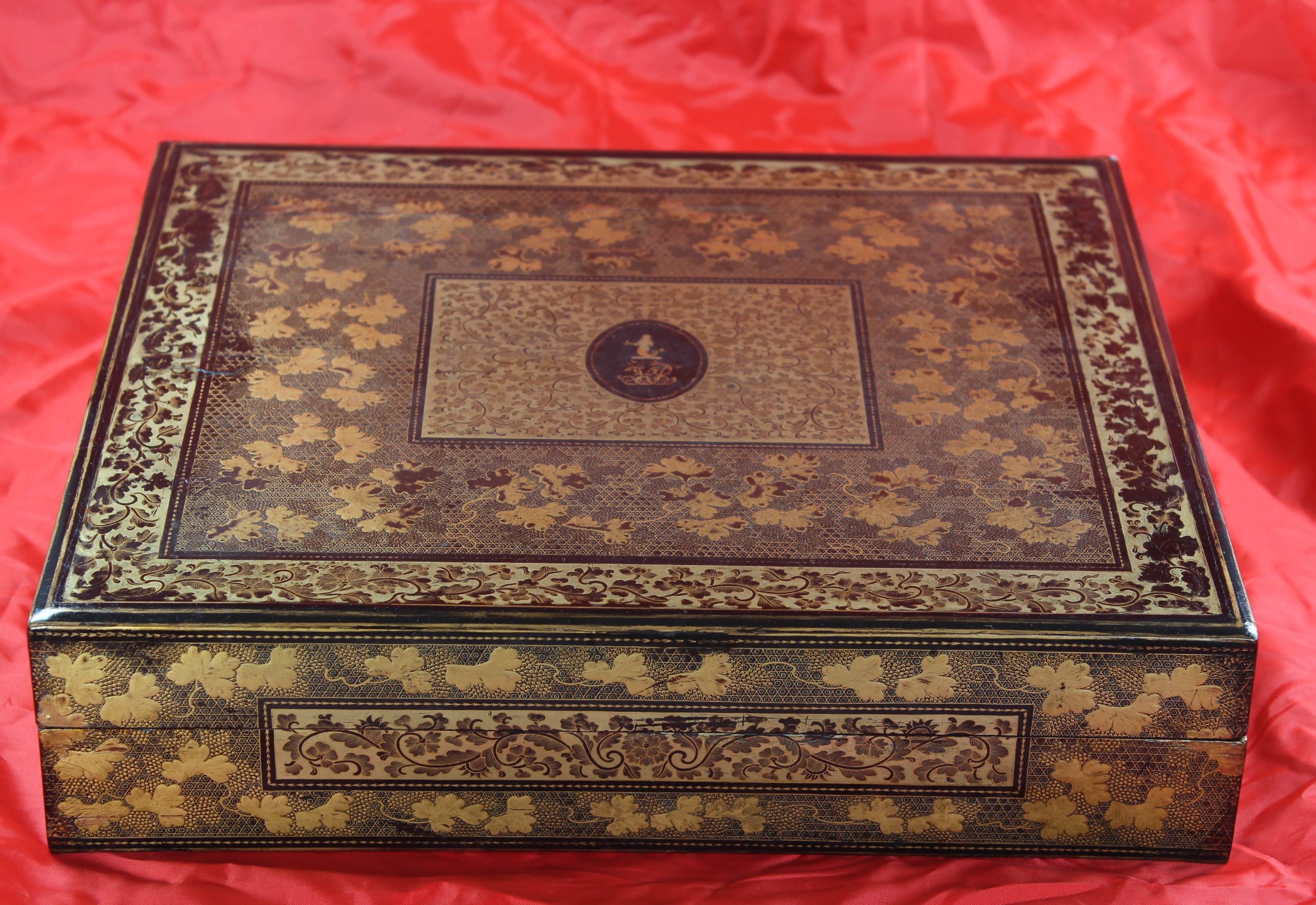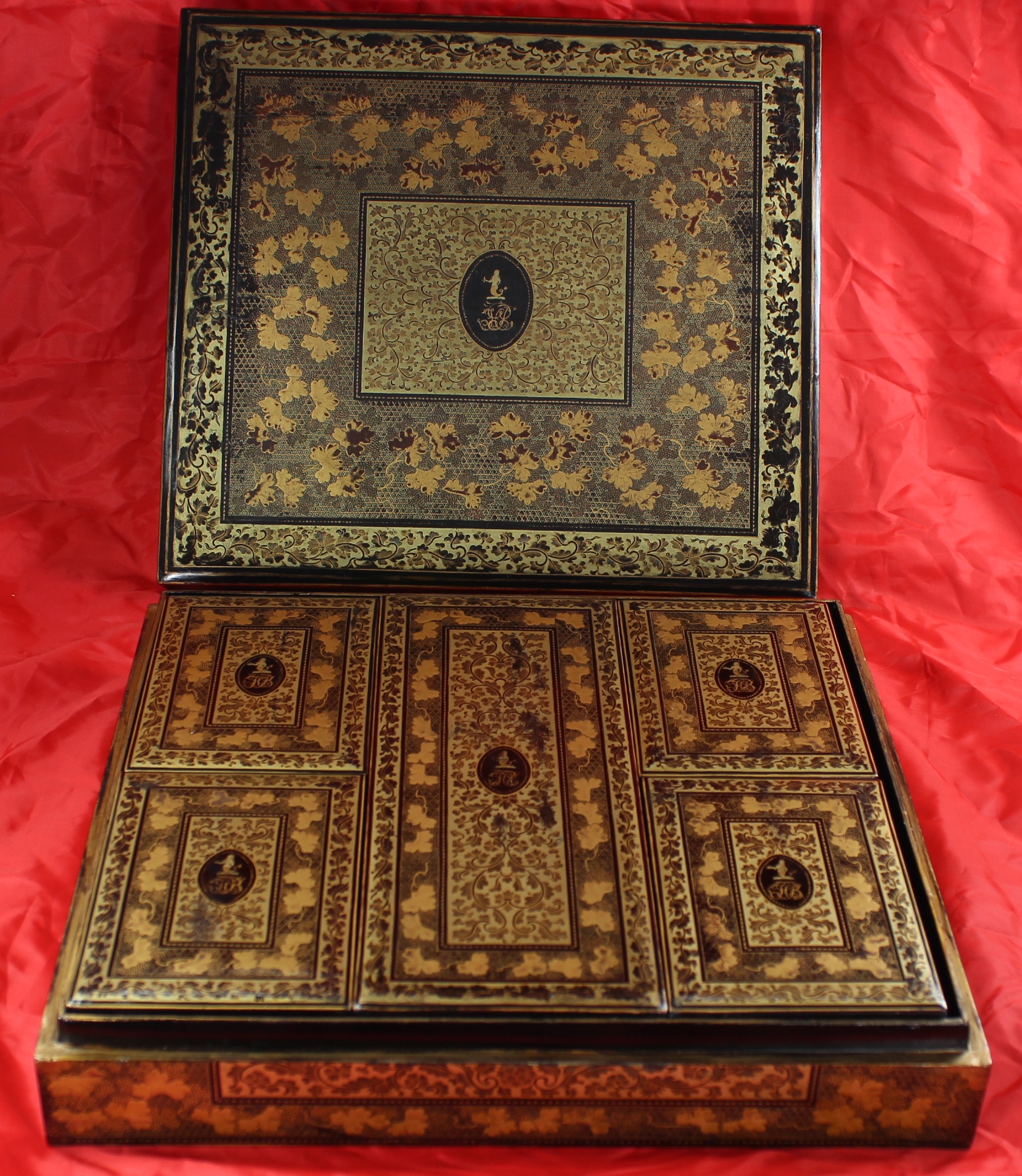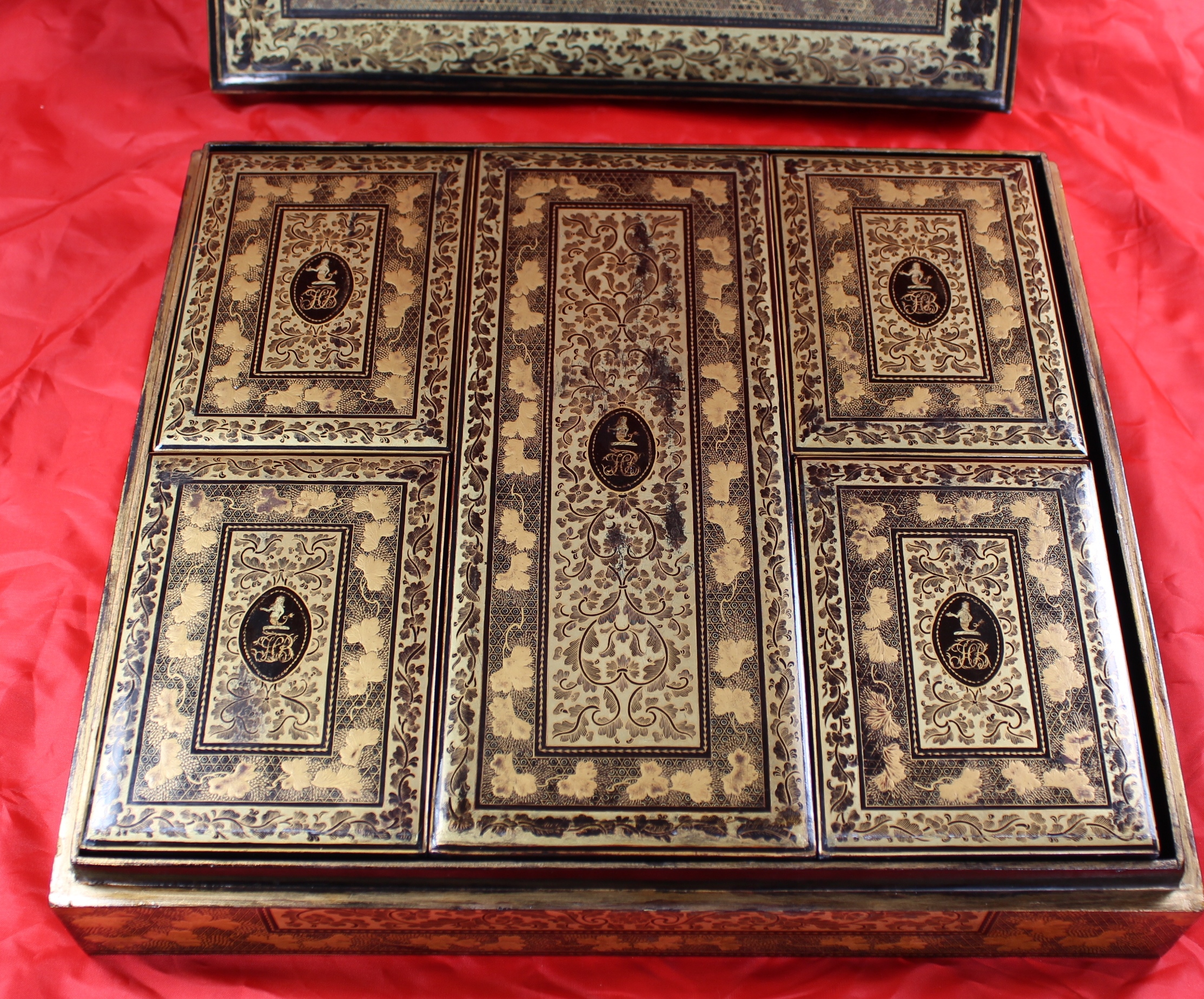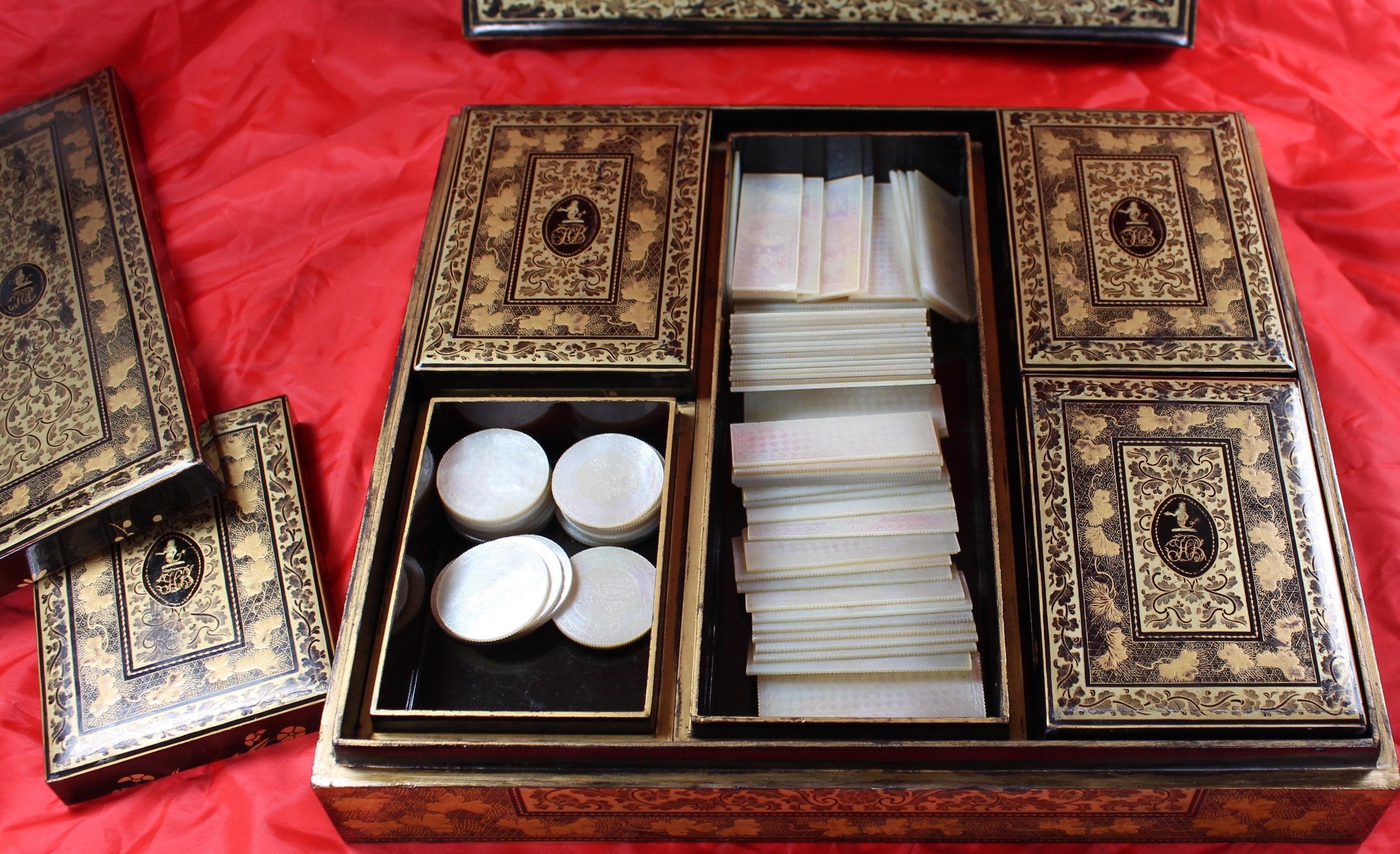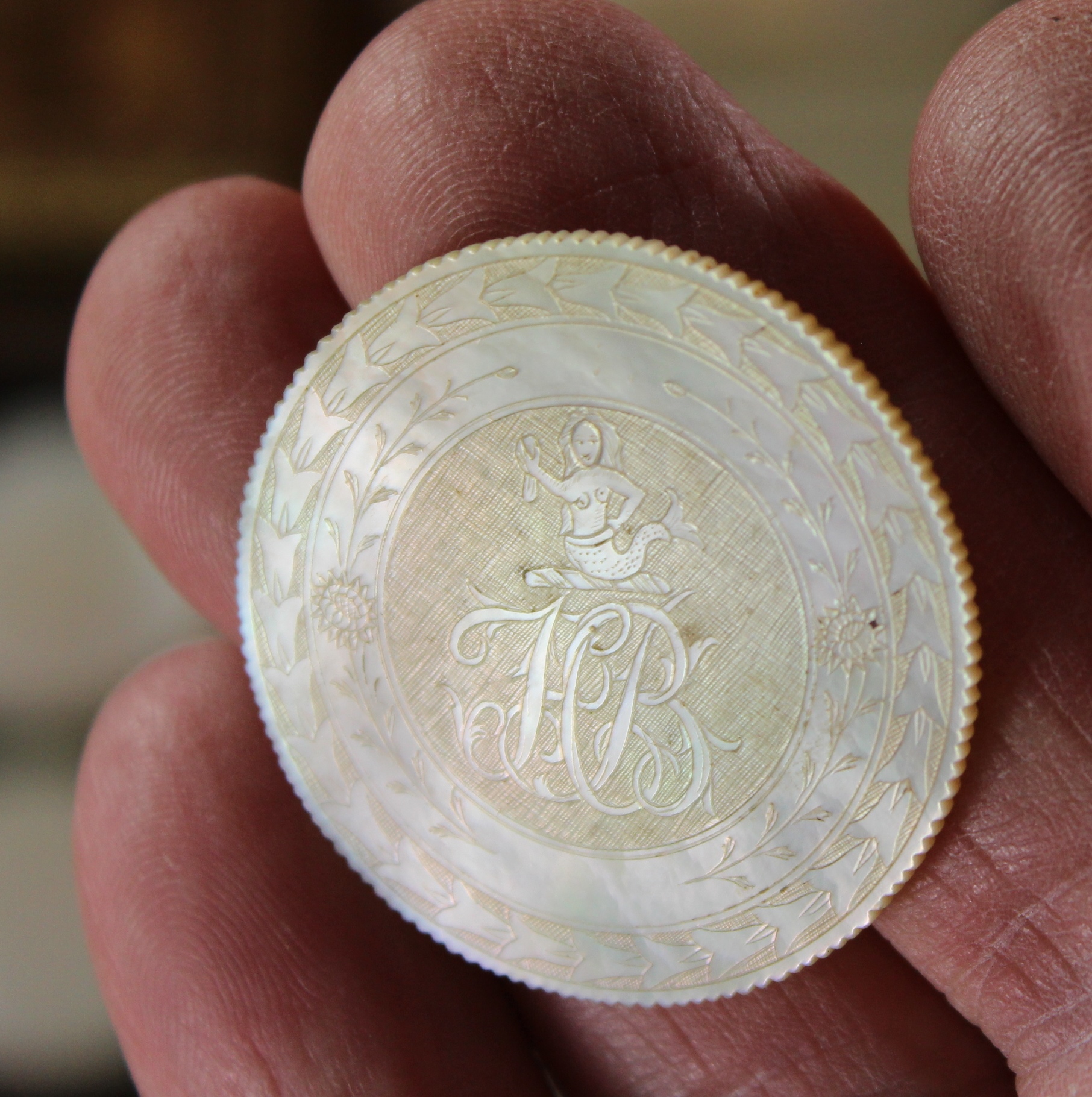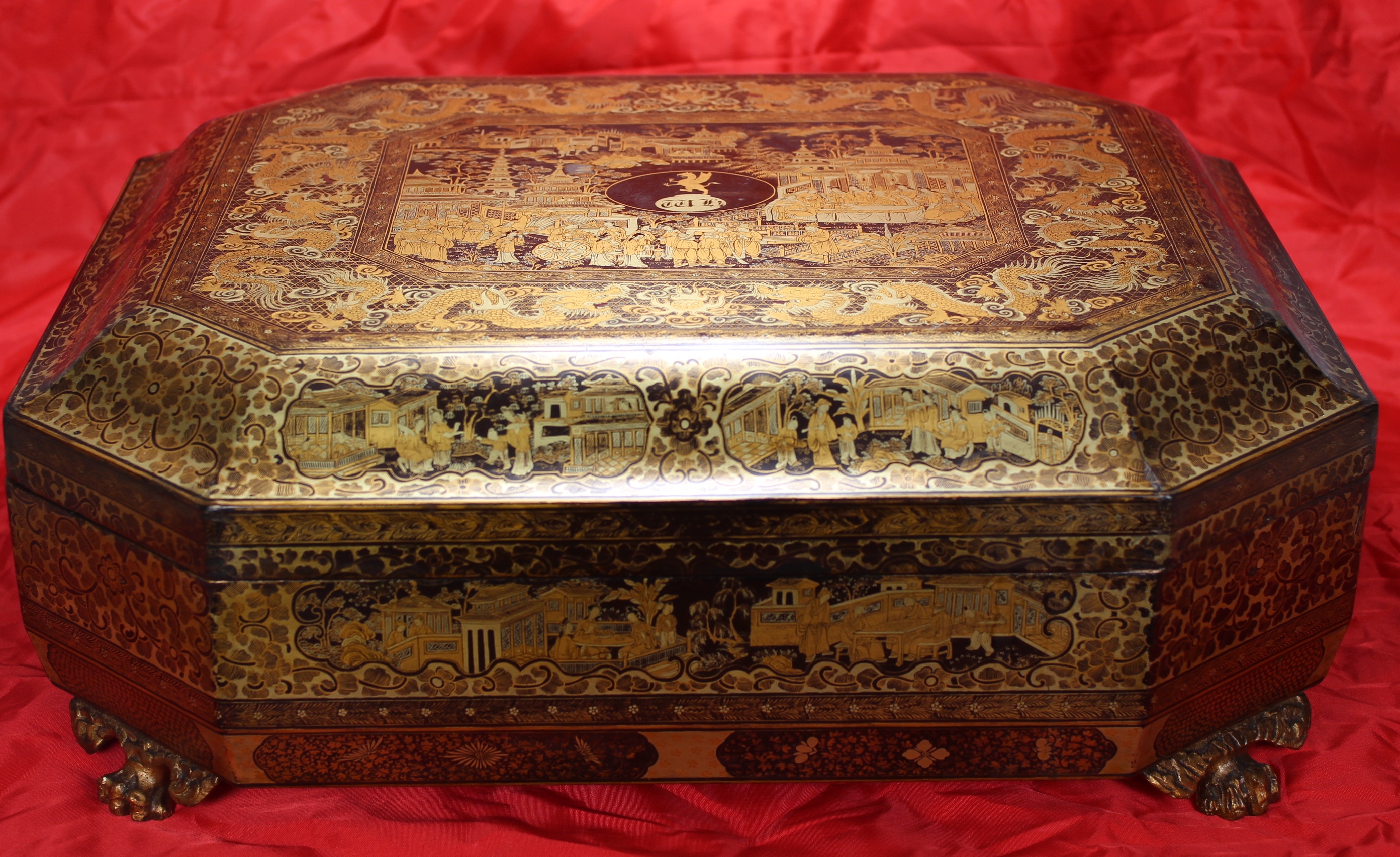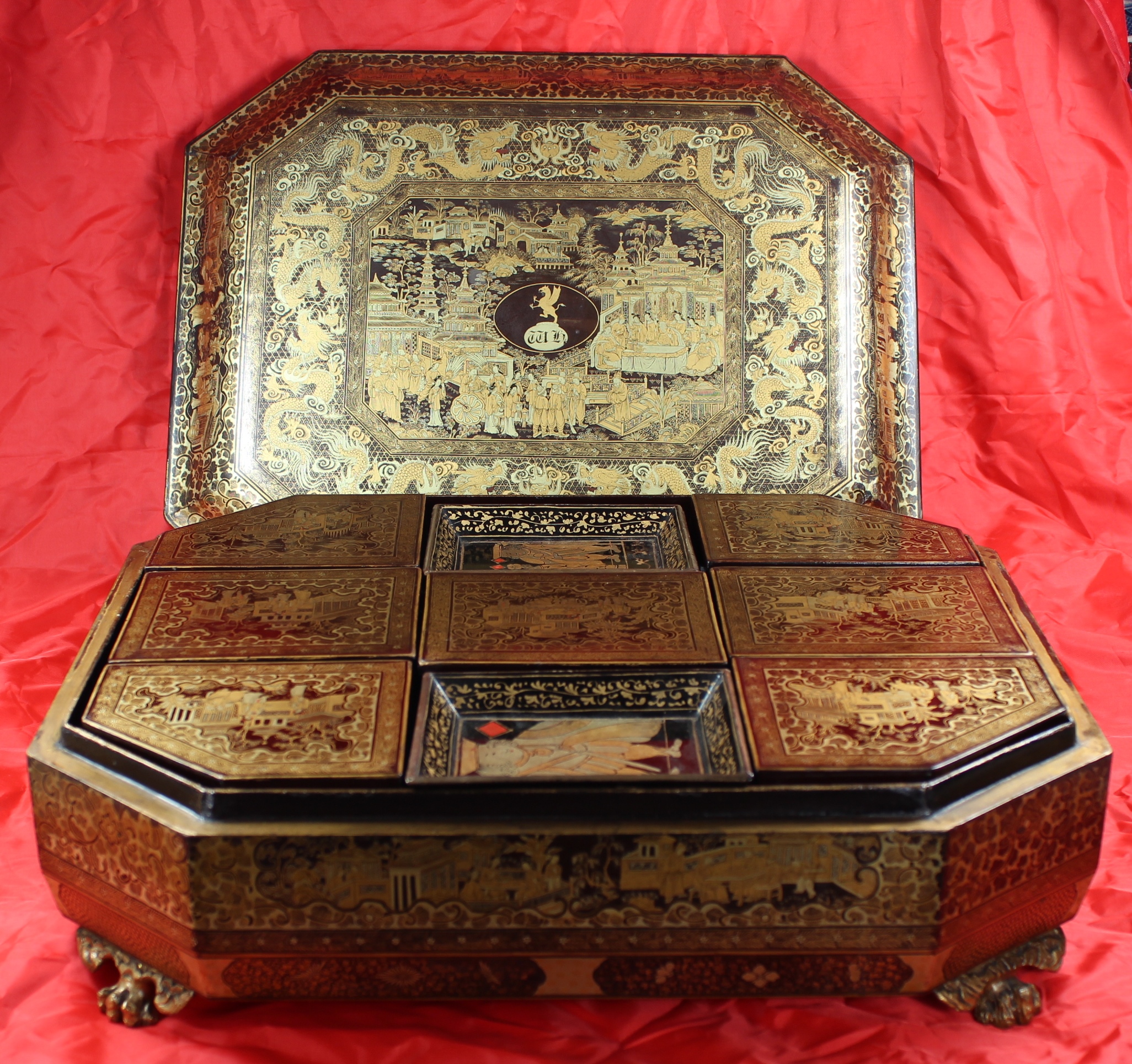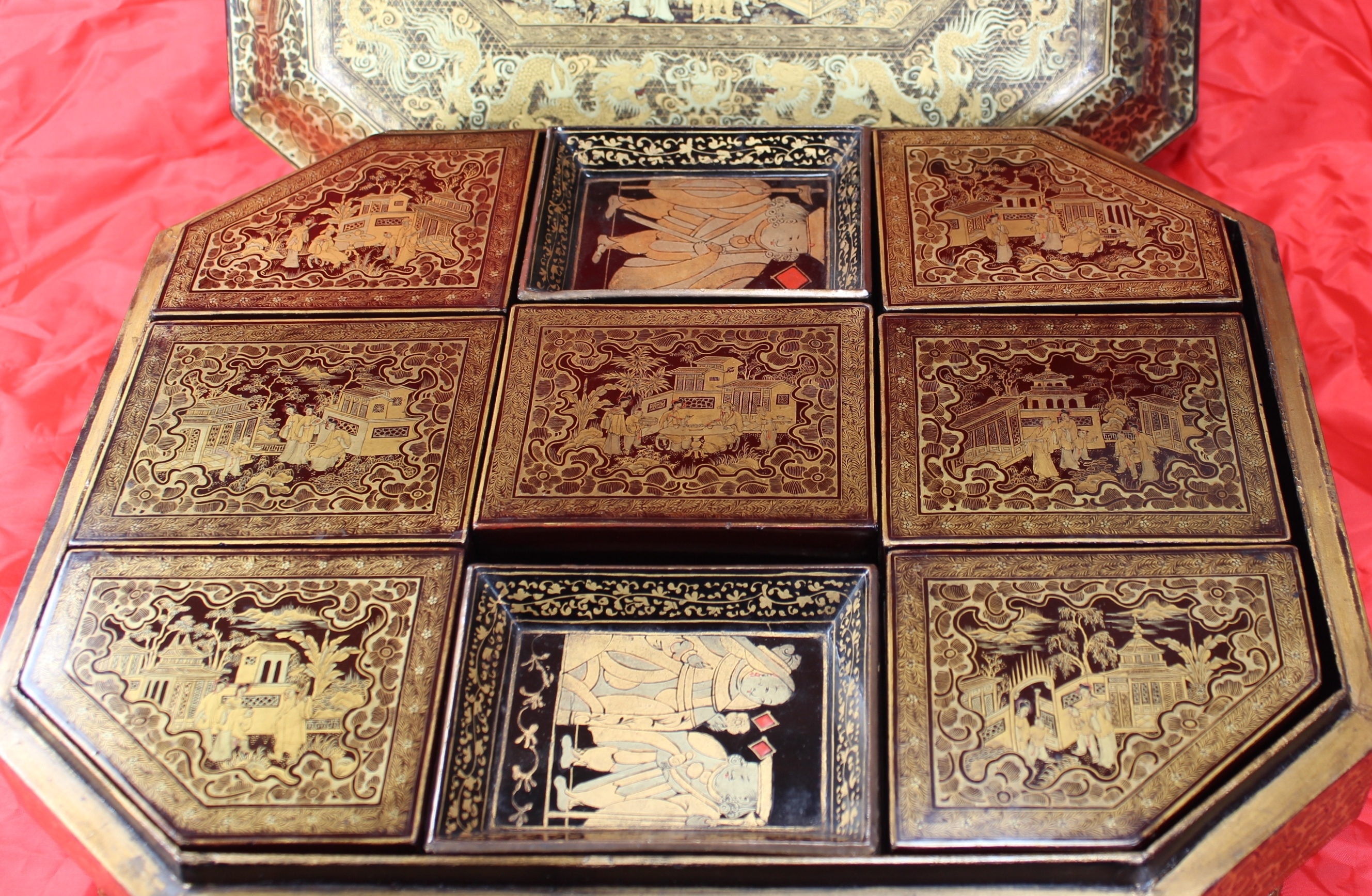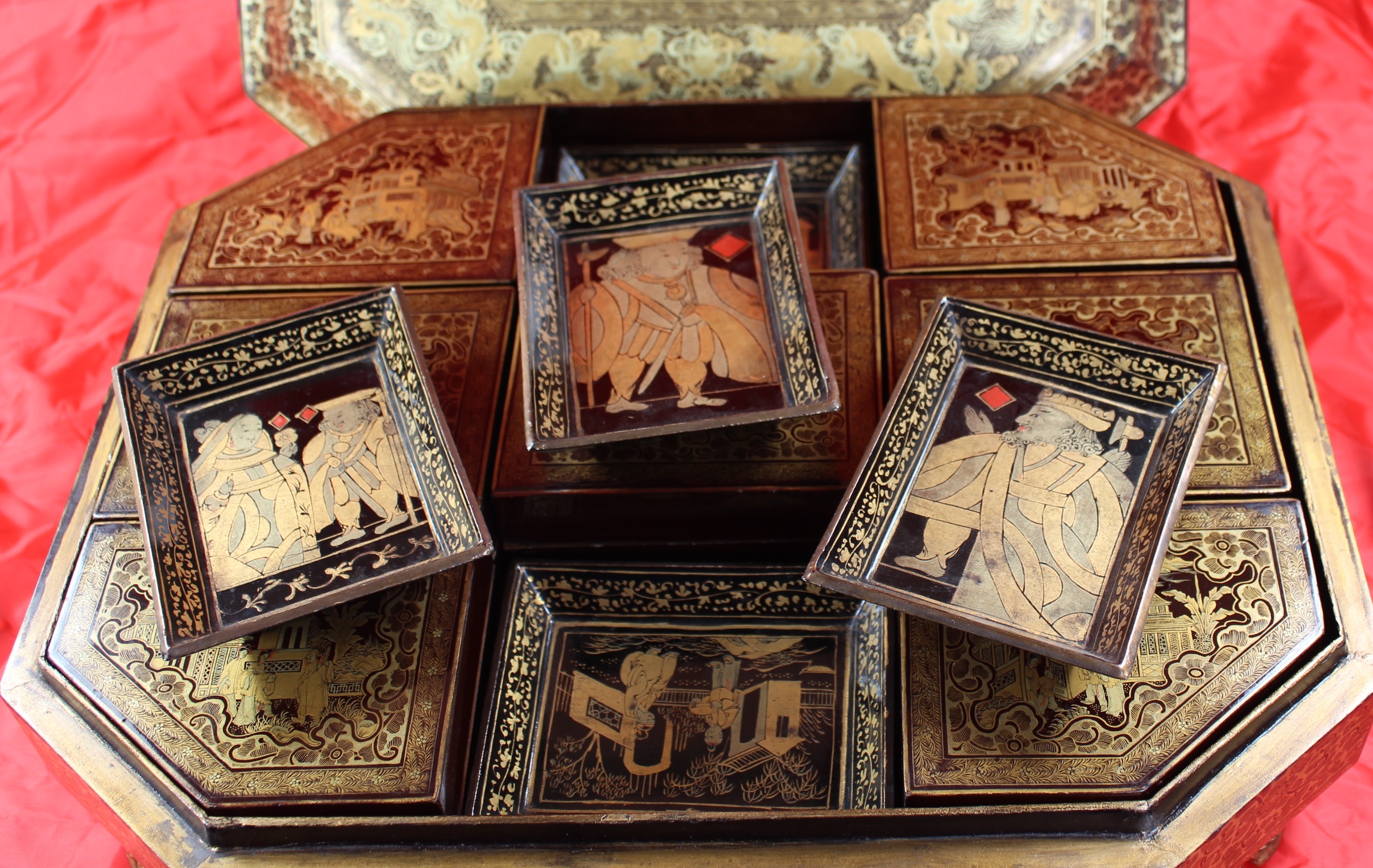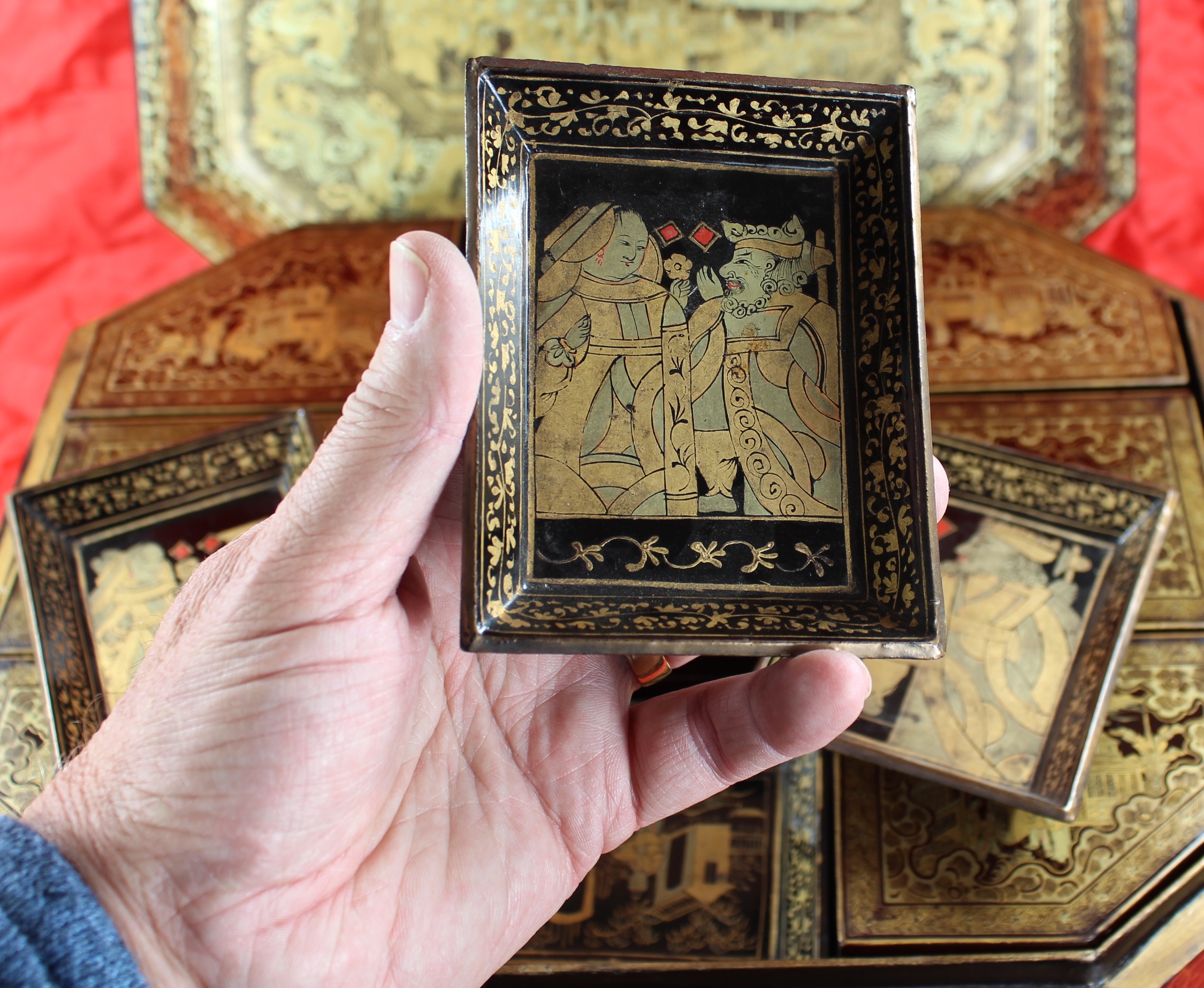Sets & Boxes
It is likely that the earliest orders for gaming counters were produced in bespoke numbers and indeed the types and shapes of counters were at the discretion of the supercargo. There was no set pattern but the requirements varied according to the games which were popular at the time in England. For instance some early sets included several double-fish ( specifically needed for the game of Ombre), fish and round counters. Double-fishes were needed at a specific point nearing the end of a game so there were perhaps only four examples in each set, one for each player, which accounts for their rarity. The changing tastes in games meant different requirements for counters; Quadrille developed from Ombre, Pope Joan (which still exists as the game Newmarket), Voltereta, Whist and Piquet were all very popular games in 18C and early 19C. It became standard for there to be three shapes to a set of 140 counters - the normal order size from around 1760. And the three shapes were usually in standard numbers: 80 long-oblongs, 40 short-oblongs ( 'squares') and 20 round. But the rules were there to be broken and those rich enough to afford non-standard sets could order whatever they desired. There are sets with up to eight different shapes and sizes, nearly always part of monogrammed or armorial sets. There were double-sets of 280 counters (as the set for Queen Charlotte was reported to be). Fishes were always in demand but from around 1760 onwards very rarely on armorial or monogrammed sets; fishes were produced by the thousand for people who could not afford bespoke sets. From around 1760 it became fashionable to have a matching box commissioned from Canton for the set of counters. Some of the earliest boxes were made of mother-of-pearl and contained four interior boxes - most games had four players. These boxes are few and far between as they are so fragile but the ones that remain are exquisite pieces of craftsmanship.
By around 1770 lacquer boxes became available and these were generally larger and often had enough space for decks of playing cards as well as four boxes for counters. The lacquer was intricately gilded with scenes of Chinese life - this was the time when China became very fashionable and when The Pavilion Brighton was built and decorated in Chinese taste. The box and counters illustrated below were produced circa 1770 for the M.P. Henry Bonham and bear his crest and monogram; many well-to-do families encouraged younger children to go into the Church, a profession - or to work for the East India Company as a sea captain or supercargo. East India Company captains needed only to make two or three successful trips to Canton and theyearned enough money to ensure that they never needed to work again. George Bonham was at Canton several times but died in a typhoon in the South China Sea - reminding us that this was fraught with danger.
Such was the popularity of these boxes that even more intricate examples became fashionable. The biox illustrated below was made for Hearing of Eye, Sussex with his crest and monogram. These boxes were raised on dragon's head feet, had a domed lid and contained seven interior klidded boxes for counters and cards, as well as a set of beautiful trays specifically made for the card game of Pope Joan, with copies of English playing cards of the time. These were the 'boodle' trays used to hold wagers of card combinations in the game.
